The large-scale import of inexpensive wood carvings from China and Southeast Asian countries over the past decade has made the lives of Taiwanese wood carvers difficult.
In Sanyi (
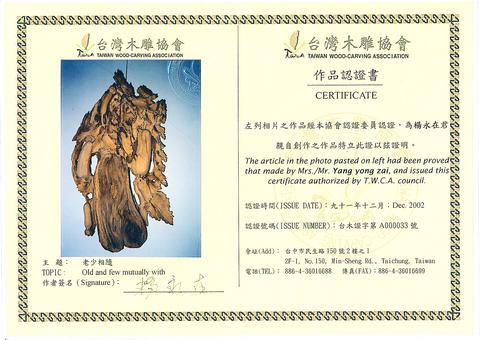
To differentiate between original Taiwanese wood carvings and the often mass produced versions on the market, the Taiwan Wood-carving Association (
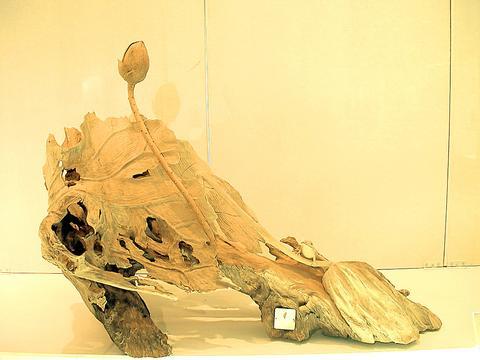
Wood carvings made in Taiwan range from several thousand NT dollars to several million, with most works costing from NT$30,000 to NT$150,000. A busy wood carver can earn around NT$2,000 a day. Chinese wood carvers typically earn 30 times less than this (around NT$67).
"A country's wood carvings gradually evolve from handicraft level to the level of art. Chinese wood carvings are still at the handicraft stage. What we see on the market are mostly factory-manufactured products. However, their low prices have caused Taiwanese wood carvers to suffer economically," said Yang Yung-tzai (
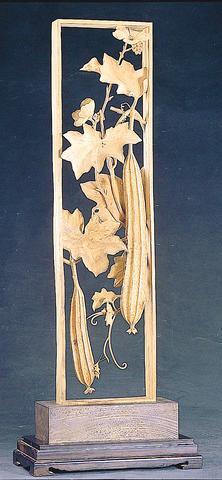
Association (TWCA).
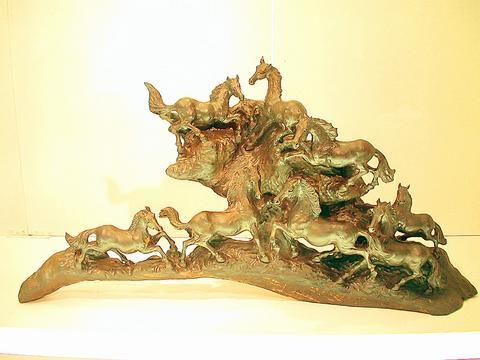
"Over the past decade, many local wood carvers have gone to China and set up factories there producing handicraft-level works. Those who did not go learned to refine their craft into works of art," Yang said.
There is also a large number of wood carvings of dubious origin sold at retail stores. Yang said that some of these are commissioned by local wood carvers to be produced by factories in China, while others are unauthorized Chinese imitations of works by popular local artists. One wood carver even submitted a Chinese-made work to participate in the National Literature and Art Achievement Award (
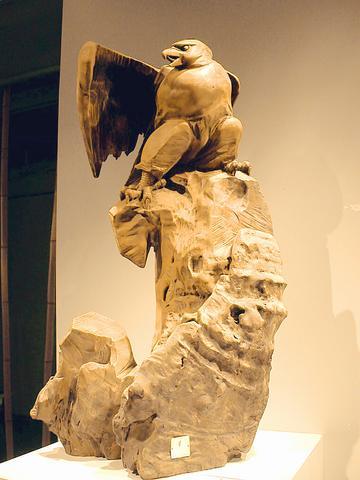
To help combat the problem of fakes, certificates of authenticity for wood carving works have been introduced by the TWCA to show that the works were made in the country, from start to finish, by a Taiwanese artist. They also detail the materials used. Though a neglected aspect for collectors, materials are important for pricing a work. Taiwanese beech timber, for example, is 20 times the price of its Vietnamese or Laotian counterparts.
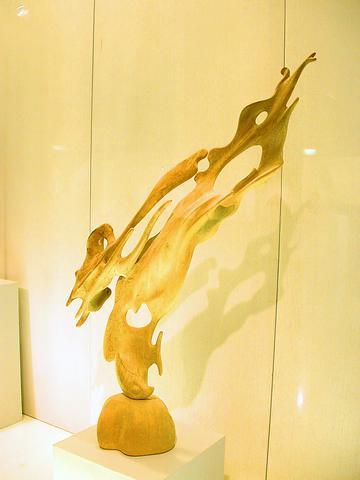
Faking it
In the past, the only proof of a wood carving's authenticity were privately printed certificates that some stores and artists attached to the works. The most widespread device to prove that a carving is genuine, however, is the autograph, which, Yang said, can easily be faked.
To get a certificate of authenticity, judges and wood craftsmen at TWCA examine the carving styles, techniques and "artistic spirit," to determine whether or not the work was made abroad. A copy of the certificate is kept at the association's office for the reference of doubtful buyers. The association has issued 200 certificates so far, each costing the creator NT$600. There is no refund for failed applications and less than 2 percent of applications fail to gain certification.
Shen Pei-tze (
"I used to give my buyers a certificate I made and I always carved my autograph on the works. But these can still be copied. Having a third party certificate for my works is a much better solution."
Others are not so sure. Lin Chin-chang (
For genuine artists, Lin went on, the best guarantee is the artists themselves. "If a wood carver has an unmistakable style, his or her name naturally becomes a brand, like Ju Ming (朱銘) in the sculpture circle. People recognize that brand."
Like most Sanyi wood carvers, Lin sells his works directly to collectors. So far, they have not required certificates from Lin. "I have been making wood carvings for over a decade, but the association has been around for less than a year. I think I am in a better position to guarantee my works."
Making it
Lin said there had been no disputes regarding the authenticity of his works so far.
Other well known wood carvers have come up with different ways to prove the authenticity of their works to collectors. Huang Ma-ching (
"A wood carving that has been featured at exhibitions has few problems with establishing its authenticity. I have had no authenticity troubles so far," said Huang, who nevertheless admitted there is a large number of copies of his works on the market.
The application fee, Huang said, discouraged him from applying for a certificate. "My works do not cater to the market, so that usually out of 100 works I have done, I can only sell a few of them. The situation is even worse these days because of the recession. Certificates may be a good thing for more commercial wood carvings, but it makes little difference to me."
Despite the mixed response, Yang is intent on making the system last.
"When Chinese factories stamp `Made in Taiwan' on their wood products to raise their price, issuing the certificates is an act of self-help," Yang said. "Both mass manufactured products and art crafts need guarantees of their origin and authenticity.
"We chose to keep our roots in Taiwan when others sought development in China. [Last year,] before the government did anything about the economic crisis we are facing, we launched this system to help ourselves."
But, six months after the launch of the certification scheme, government authorities are catching up. The Council for Cultural Affairs (
The certificate for ceramic works is scheduled to be launched at the end of this year, according to Lu Chia-ching, chief executive of the Chinese Ceramic Association (
Proving it
"Unlike wood carvings, the ceramic circle has seen few disputes over the origin of ceramic works, but there are confusing standards of quality. The certificate will mark those works deemed above standard quality," Lu said.
The TWCA, meanwhile, believes it is on to a good thing with the certification scheme, but needs to convince wood carving artists the idea is sound.
"What artists do not yet seem to understand is that this is a guarantee of their intellectual property rights. Collectors may not have doubts about the origin of their collection today, but a dispute may arise decades afterward. The wood carving circle needs to promote the protection of intellectual property rights," Yang said.

Exceptions to the rule are sometimes revealing. For a brief few years, there was an emerging ideological split between the Democratic Progressive Party (DPP) and Chinese Nationalist Party (KMT) that appeared to be pushing the DPP in a direction that would be considered more liberal, and the KMT more conservative. In the previous column, “The KMT-DPP’s bureaucrat-led developmental state” (Dec. 11, page 12), we examined how Taiwan’s democratic system developed, and how both the two main parties largely accepted a similar consensus on how Taiwan should be run domestically and did not split along the left-right lines more familiar in

As I finally slid into the warm embrace of the hot, clifftop pool, it was a serene moment of reflection. The sound of the river reflected off the cave walls, the white of our camping lights reflected off the dark, shimmering surface of the water, and I reflected on how fortunate I was to be here. After all, the beautiful walk through narrow canyons that had brought us here had been inaccessible for five years — and will be again soon. The day had started at the Huisun Forest Area (惠蓀林場), at the end of Nantou County Route 80, north and east

Specialty sandwiches loaded with the contents of an entire charcuterie board, overflowing with sauces, creams and all manner of creative add-ons, is perhaps one of the biggest global food trends of this year. From London to New York, lines form down the block for mortadella, burrata, pistachio and more stuffed between slices of fresh sourdough, rye or focaccia. To try the trend in Taipei, Munchies Mafia is for sure the spot — could this be the best sandwich in town? Carlos from Spain and Sergio from Mexico opened this spot just seven months ago. The two met working in the

This month the government ordered a one-year block of Xiaohongshu (小紅書) or Rednote, a Chinese social media platform with more than 3 million users in Taiwan. The government pointed to widespread fraud activity on the platform, along with cybersecurity failures. Officials said that they had reached out to the company and asked it to change. However, they received no response. The pro-China parties, the Chinese Nationalist Party (KMT) and Taiwan People’s Party (TPP), immediately swung into action, denouncing the ban as an attack on free speech. This “free speech” claim was then echoed by the People’s Republic of China (PRC),